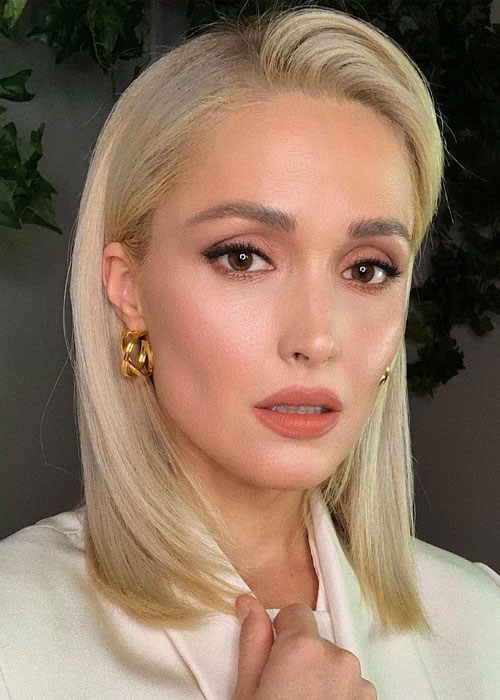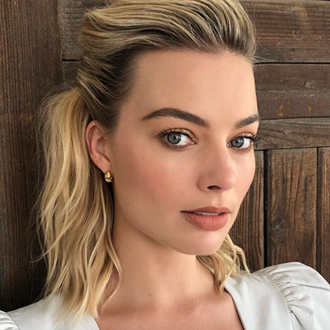The things you need to know before you bleach your hair

Thinking about going lighter? Read this first
Thinking about going lighter? Read this first
Fact: Platinum blonde hair looks *so* ridiculously cool. Also fact: Bleaching your hair is no walk in the park – it can be a serious process. And that goes for all the hair colour trends that come with it – like rose gold, metallic silver, violet grey. It all takes time and patience.
But, if you get it done right, the results can be amazing.
If you want to nab bleach blonde hair but don’t want to completely ruin your strands in the process (read: everyone), there are a few things you ought to know in order to keep your locks looking as healthy, smooth and shiny as possible.
Should I bleach my hair?
Decision time. Before we get on to how to bleach hair, it’s important to know that going platinum isn’t a decision that you can make willy nilly – it can be a serious transformation, so you need to be committed.
Nabbing platinum blonde hair as well as white hair is not just a matter of your colourist slapping on some hair dye. Hair bleach essentially works in the same way as household bleach does to get rid of stains: It removes your hair’s natural pigment by stripping it of the natural melanin or artificial pigment (if you have dyed your hair). This can be quite damaging, so you need to be ready to undertake some serious preparation beforehand (get into ALL the conditioning hair masks and hydrating treatments) and afterwards (repairing products and colour-boosting treatments) to keep your mane in tip-top shape.
Before you jump on board, it’s also important to be aware that your natural colour matters. Trichologist and hair expert Simone Abaron from Apotecari Bioactive Haircare says those with black or brown hair should expect a longer process compared to those with light hair. Darker hair will require a lot more bleach applications, and it may not be possible to lighten it all the way to a pale blonde. “The darker your natural hair colour is, the slower the bleaching process will need to be, reducing its natural pigment in steps. Slow and steady wins the race, so if you’re naturally quite dark and your dream is to go lighter, prepare yourself for a longer journey over several sessions.”
Bleaching hair in a salon
Assuming that you’ve done your research and booked an appointment with a professional colourist, the number one rule is: don’t wash your hair the night before your appointment as this will help reduce irritation to the scalp. You can even stretch out the shampoo ban for a few days prior to ensure your hair has an extra coating of natural protective oils prior to your appointment.
You should also have a full consultation with your hairdresser before your colour change, where you can discuss your hair history and anything that might affect the processing time so they can recommend a tailored bleaching program for you (this is why you should leave it to the pros!). Abaron says, “Expect to answer a comprehensive set of questions about your at-home care regimen and your colouring history, and share pictures of the colour you are hoping to achieve”. If you thought there was only one shade of blonde, you need to do some research on the ol’ hair colour chart!
While most people can bleach their hair, those with naturally fine, fragile hair or hair that is already damaged from hair colour may not be the best candidates and bleaching is usually discouraged by a trained professional.
“In an ideal world, your colour specialist will also assess the look and feel of your hair and perform a strand test, determining the quality of your hair, before proposing how they plan to go about your colour service. For instance, they may choose to use foils and/or free hand. They might also sit you under a heating appliance to encourage even and quick processing of the bleach. A great colour technician will talk you through the entire process and will create a personalised plan including internal and external care for you and your hair goals,” Abaron says.
Now, for the actual bleaching. We don’t want to scare you, but you’re going to want to prepare for some discomfort, especially when it comes to your roots. VS Sassoon hair expert Rob Reeves says, “If you’re a first-time bleach client you’d normally have the ends lightened first then the roots; if you’re just having a retouch then the roots will be applied with a bowl and brush. This will be processed until hair is lightened, normally between 30 to 50 minutes depending on each brand’s manufacturer’s instructions.
“Hair is then rinsed often with cool water to further reduce irritation, shampooed, conditioned and a treatment is applied. Hair is then dried with a cool blow-dryer and the desired toner applied,” says Reeves.
The best way to choose a professional hairdresser
“A great indicator of a skilful hair colourist is their prioritisation of the health of your hair,” says Abaron. “Listen to the language they use and what they propose; if your mane is naturally dark and they're committing to turn you platinum blonde overnight, this isn't responsible.”
“A great hair colourist will use good quality professional-grade products, and go through a comprehensive consultation before starting. Do your research first by stalking their Instagram, Google and Facebook reviews. Also, ask your nearest and dearest for recommendations and make sure you ask why they love their colour technician,” says Abaron.
“If they aren’t recommending in-salon and at-home treatment care for post-bleach, maybe look for another salon,” adds Reeves.
Can you bleach your hair at home?
While it can be done, bleaching hair at home is risky business, and most professionals will advise against it. That’s because if done wrong, you can seriously damage the health of hair and even burn your scalp.
However, if you’re insistent about going down the DIY route, don’t reach for the hydrogen peroxide just yet. There are some specific steps (and products) you need in order to do it responsibly. To find out where to start, check out our guide on how to bleach your hair at home *without* damaging it.
How long does the colour usually last?
Once you’ve bleached your hair, you’ll need to care for it if you want to maintain the results. Bleached roots will start to revert to the original hair colour as soon as they start growing out – this just depends on how fast your hair grows. “Bleach is permanent as it lightens and removes hair’s natural pigment,” says Reeves. “It will grow out and the regrowth will need to be re-bleached. You can have a toner as regularly as needed to maintain the tone and reflex of your blonde.”
How to take care of your hair after bleaching
After bleaching your hair, it’s important to incorporate repairing products into your haircare routine in order to prolong the life of your colour and prevent it from turning brassy. For example, if you’re using a regular shampoo and conditioner, you’re essentially just washing the tone out with each wash, whereas products designed specifically for coloured-treated hair will help to re-tone the hair each time you wash it.
Your freshly bleached hair won’t just look different, it will also feel different. You’ll notice your hair’s texture has changed and it may feel dry, fragile and almost straw-like. If you have curly hair, bleaching can change your curl structure, making curls frizzier. To bring your hair back to life, you’ll need to commit to a solid aftercare routine in order to strengthen and condition your hair.
A good-quality purple shampoo and conditioner and a hydrating and repairing hair treatment will keep those dreaded yellow tones at bay while working to nourish, condition, repair and enhance shine. We suggest reaching for a shampoo like Fanola No Yellow Shampoo or John Frieda Sheer Blonde Colour Renew Tone-Correcting Shampoo, and a deep conditioning treatment like Olaplex No.6 Bond Smoother, L’Oréal Professionnel Smartbond Step 3 Conditioner or Keratase Resistance Masque Force Architecte.
Along with adding moisture and protein to your haircare routine, you’re going to want to stay away from products that can further dry out the hair and scalp, like dry shampoo and hairspray. You’ll also need to minimise the use of heat tools - and if you absolutely have to use them, ensure the lowest temperature setting is selected. “The VS Sassoon Digital Sensor Hairdryer maintains a uniform and constant hair safe temperature of 70 degrees Celsius to prevent hair damage - perfect for hair that’s been bleached,” says Reeves.
“It’s important to create a personalised prescription for your hair using a carefully-curated marriage of internal nutrition and external treatments,” says Abaron. “Increasing your intake of premium hair health supplements like Apotecari's Crowning Glory will inject an acutely-required hydration boost after bleaching, while Apotecari Hair Food will support the health and condition of your hair.”
Looking for more tips on how to ensure your hair colour lasts the distance? These haircare and styling tips will sort you out.
Have you got any tips or tricks for looking after bleached hair? Share with us in the comment section below.
Main image credit: @hungvanngo

Erin Docherty is a Beauty Writer for BEAUTYcrew, Beauty Editor for Women's Health magazine and a Grooming Writer for Men's Health magazine. She has a keen interest in cosmeceutical skin care and is currently working on minimising her 9-step skin care routine – because ain’t nobody got time for that. When she’s not writing about the latest beauty news, or applying copious amounts of serum, you can find her spending all her money in Sephora.







